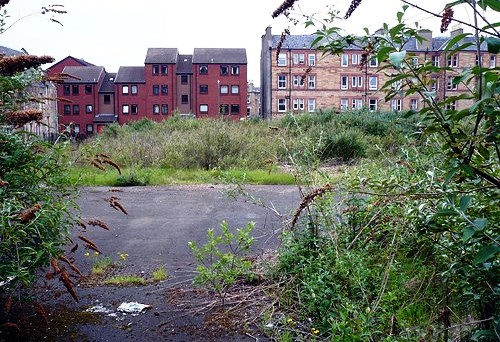Edinburgh, Scotland like all other cities in the UK, is defined by its boundary. As a result, the only real opportunity for growth within the city – without sprawling into vital greenspace – is urban regeneration.
We are, quite literally, running out of space. More emphasis needs to be placed on bringing brownfield sites back to life.
The City of Edinburgh Council is picking up the baton for social housing, and notable regeneration achievements have been made. However, the myriad of derelict or disused buildings that are privately owned need to be utilized to help with the evolution of the city, both physically and socially.
The urban regeneration of specific areas that have been neglected in some parts or specific buildings left to ruin not only provides new accommodation but it also helps to rebuild a community, breathing new life into the area.
Just look at areas in London such as Brixton and Kings Cross, both of which now are great locations with a strong sense of community. There’s also the positive example of the regeneration of many industrial sites in Manchester, which has helped to transform the city.
It’s happening in Edinburgh, too. And not a moment too soon.
In 2010, WWF Scotland reported that Scotland had accumulated more derelict land than at any point since 2002, but that the rate of regeneration of these properties had slowed to a seven-year low. The non-profit group said that this failure to put brownfield land to use was placing unnecessary pressure on greenfield sites, which were rapidly being destroyed by developers because they were easier and cheaper to build on. WWF Scotland called on urban leaders to put policies, regulations, and incentives in place to make brownfields more financially attractive to redevelopers.
One example that this is the direction Edinburgh is taking: The 10th annual Brownfield Land Scotland conference took place in Edinburgh in February of 2017. It brought attendees up to speed on the regulatory framework affecting brownfield redevelopment, as well as practical solutions to many of the risk assessment
and remediation challenges associated with contaminated land and groundwater.
The event emphasized actionable guidance specifically applicable to the brownfield agenda in Scotland, including:
- Regulatory, Policy & Planning Update – exploring the implications of the new SEPA regulatory framework and the Scottish Planning Review;
- Local Authority Perspective on improving the quality of contaminated land risk assessment to facilitate remediation and development;
- Asbestos: Practicalities of practically applying industry guidance for asbestos in soil when it is found on-site;
- Waste and Re-Use of Materials: Effectively implementing good waste management practice on brownfield and construction projects in Scotland;
- Dealing with specific contaminants, including PFOS / PFAS and Radioactive contamination; and
- Scottish Remediation Project Case Studies.
Photo of brownfield at Polwarth, Edinburgh by Graham Chandler via Urban Realm.
See full article by Daryl Teague in The Scotsman.
See more info about the 2017 Brownfield Briefings event (PDF).

